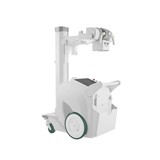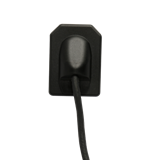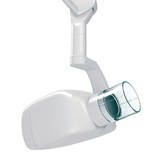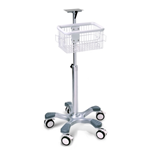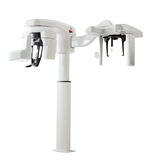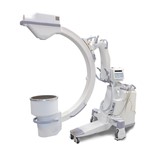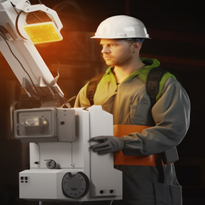Mobile X-ray machines have emerged as invaluable tools within the realm of modern healthcare, providing healthcare professionals with the capability to perform on-the-spot diagnostics in a variety of medical settings. These portable devices have revolutionized the way healthcare is delivered, offering a versatile means of obtaining crucial diagnostic images without the need for patients to be transported to dedicated radiology departments. In this comprehensive exploration, we delve into the multifaceted applications of mobile X-ray machines across various medical settings, each characterized by its unique challenges and demands.
I. Mobile X-Ray in Trauma and Emergency Care: On-the-Spot Diagnostics
A. Use in Emergency Departments
- Rapid Assessment of Injuries: Mobile X-ray machines play a pivotal role in emergency departments by enabling swift and accurate assessments of traumatic injuries. With the ability to obtain high-quality images directly at the patient's bedside, healthcare providers can promptly identify fractures, dislocations, and foreign objects, facilitating immediate treatment decisions.
- Minimizing Patient Movement and Discomfort: The mobility of X-ray machines eliminates the need for critically injured or immobilized patients to be transported to radiology suites, thereby reducing the risk of exacerbating injuries and minimizing patient discomfort. This approach not only expedites the diagnostic process but also enhances patient safety.
B. Application in Trauma Centers
- Guiding Surgical Interventions: In trauma centers, where complex injuries often require surgical intervention, mobile X-ray machines serve as indispensable tools. Surgeons can utilize real-time imaging to guide procedures, ensuring precise placement of implants, alignment of fractures, and removal of foreign objects.
- Monitoring Progress During Treatment: Post-surgery, mobile X-ray machines continue to play a vital role by allowing clinicians to monitor the progress of healing. Serial X-rays enable healthcare professionals to assess the alignment of fractures, the integration of implants, and the absence of complications, ensuring optimal patient outcomes.
C. Benefits in Disaster Response
- Quick Deployment for Mass Casualty Incidents: During mass casualty incidents such as natural disasters or accidents, the rapid deployment of mobile X-ray units can significantly enhance response capabilities. These portable devices can be swiftly transported to disaster sites, enabling timely assessments and triage of injured individuals.
- Efficient Triage and Decision-Making: Mobile X-ray machines support efficient triage by aiding healthcare teams in prioritizing patients based on the severity of their injuries. This streamlined approach ensures that critical cases receive immediate attention, ultimately saving lives.


Find the right Mobile X-Ray Machine
Compare quotes from expert Australian suppliers and make the best choice. It's free, quick and easy!
II. Utilization in Intensive Care Units (ICUs) and Isolation Wards
A. Role in Critical Care Settings
In the demanding environment of Intensive Care Units (ICUs), the deployment of mobile X-ray machines plays a pivotal role in enhancing patient care and treatment outcomes. This section delves into the specific applications within critical care settings, emphasizing the technical and clinical advantages they offer.
- Continuous Monitoring of Critically Ill Patients
Mobile X-ray machines offer a valuable resource for ICUs by providing real-time imaging capabilities at the patient's bedside. This continuous monitoring serves several essential purposes:
- Dynamic Assessment: Critical care often involves patients with rapidly changing conditions. Mobile X-ray allows healthcare professionals to assess the progression of diseases, injuries, or post-operative outcomes promptly.
- Ventilator Management: For patients on mechanical ventilation, regular X-rays are essential to monitor the positioning of endotracheal tubes, central lines, and the development of complications like pneumonia.
- Treatment Efficacy: Physicians can evaluate the effectiveness of treatments, such as the repositioning of catheters, tubes, or assessing the impact of medications.
- Reducing the Risk of Infection Transmission
In the critical care environment, infection control is of paramount importance. Mobile X-ray machines contribute significantly to infection prevention and control measures:
- Limiting Patient Movement: Critically ill patients are often unable to be transported to a radiology department due to their fragile condition. Mobile X-ray machines eliminate the need for patient movement, reducing the risk of complications and hospital-acquired infections.
- Minimizing Staff Exposure: By bringing the imaging equipment to the patient's location, the number of healthcare workers exposed to infectious patients is minimized, enhancing safety for the medical staff.
B. Isolation Ward Applications
Isolation wards are designated areas within healthcare facilities where patients with contagious diseases are housed to prevent the spread of infections. Mobile X-ray machines offer valuable support in managing such cases, ensuring both accurate diagnostics and strict isolation protocols.
- Diagnosing Infectious Diseases
- Rapid Diagnosis: In cases of suspected contagious diseases, prompt diagnosis is crucial for early intervention and isolation. Mobile X-ray machines facilitate quick and accurate identification of pulmonary infections, including tuberculosis, pneumonia, and more recently, COVID-19.
- Tracking Disease Progression: Serial X-rays enable healthcare providers to monitor disease progression and the response to treatment, guiding decisions on isolation continuation or patient discharge.
- Ensuring Isolation Compliance
- Minimal Patient Movement: Patients in isolation should ideally remain within their designated rooms to prevent disease transmission. Mobile X-ray units eliminate the need for patient transportation, reducing the risk of exposing others to infectious agents.
- Reduced Contamination Risk: By conducting imaging within isolation rooms, the risk of contaminating equipment or personnel is minimized, maintaining the integrity of the isolation environment.
III. Mobile Imaging in Rural and Underserved Areas: Bringing Healthcare Closer
Mobile X-ray machines have emerged as indispensable tools in bridging healthcare disparities, especially in remote and underserved regions. These portable diagnostic devices extend crucial diagnostic capabilities to areas where access to advanced medical facilities is limited. In this section, we will explore how mobile X-ray machines are addressing healthcare disparities by reaching remote regions and overcoming logistical challenges. Additionally, we will delve into their integration with telemedicine, supporting teleconsultations with specialists and enhancing remote patient monitoring.
A. Addressing Healthcare Disparities
- Extending Diagnostic Capabilities to Remote Regions: In many remote and underserved areas, access to sophisticated medical equipment and specialized healthcare providers is a luxury. Mobile X-ray machines, with their portability and ease of use, bring advanced diagnostic capabilities to these regions. This extension of diagnostic services can be a game-changer, allowing healthcare providers to detect and address various medical conditions promptly.
- Improved Timeliness of Diagnosis: Mobile X-ray machines enable healthcare professionals in remote areas to diagnose medical conditions quickly. Whether it's a suspected fracture, respiratory ailment, or any other condition that requires X-ray imaging, these devices offer prompt results, leading to faster treatment initiation.
- Reducing the Need for Patient Travel: Patients in remote areas often face the burden of traveling long distances to reach healthcare facilities equipped with X-ray machines. Mobile X-ray units eliminate this need, making healthcare more accessible and reducing the physical and financial strain on patients.
- Overcoming Logistical Challenges: Remote regions often present logistical challenges that hinder the delivery of healthcare services. These challenges include difficult terrain, lack of infrastructure, and limited access to electricity. Mobile X-ray machines are designed to overcome these obstacles.
- Portability: Mobile X-ray machines are compact and lightweight, making them suitable for use in remote areas with limited infrastructure. They can be easily transported to different locations, even in rugged terrains, ensuring that healthcare reaches those who need it most.
- Battery-Powered Operation: To address the issue of electricity access, many mobile X-ray units are battery-powered. This feature allows healthcare providers to conduct X-ray examinations even in areas with unreliable power sources, ensuring continuous service delivery.
B. Telemedicine Integration
The integration of mobile X-ray machines with telemedicine platforms has further expanded their reach and impact in remote areas. This synergy between technology and healthcare has opened up new possibilities for providing specialized medical consultations and remote patient monitoring.
- Supporting Teleconsultations with Specialists
- Enhanced Collaboration: Mobile X-ray machines enable local healthcare providers in remote areas to capture high-quality X-ray images. These images can be transmitted in real-time to specialists located elsewhere, facilitating teleconsultations. Specialists can provide timely insights and recommendations, ensuring that patients receive the best possible care, even in remote settings.
- Access to Specialized Care: Patients in remote regions often lack access to specialized medical expertise. Through teleconsultations supported by mobile X-ray imaging, these patients can receive consultations from specialists without the need to travel long distances, thereby reducing delays in diagnosis and treatment.
- Enhancing Remote Patient Monitoring
- Continuity of Care: In long-term care scenarios, such as managing chronic illnesses or post-operative recovery, mobile X-ray machines play a crucial role in remote patient monitoring. Regular X-ray assessments can be conducted at patients' homes or care facilities, ensuring continuity of care without the need for frequent hospital visits.
- Convenience for Patients: For immobile or homebound patients, the convenience of having diagnostic services brought to their doorstep cannot be overstated. Mobile X-ray machines minimize the stress and discomfort associated with transportation to healthcare facilities, promoting patient compliance with follow-up examinations.
IV. Role in Long-Term Care Facilities and Home Healthcare
In the ever-evolving landscape of healthcare, the role of mobile X-ray machines extends beyond the confines of traditional hospital settings. Long-term care facilities and home healthcare services have witnessed a significant transformation with the integration of this portable imaging technology. In this section, we delve into how mobile X-ray machines are revolutionizing the care of elderly and chronically ill residents while simultaneously providing diagnostic services at the very doorstep of immobile or homebound patients.
A. Mobile X-ray in Long-Term Care
- Monitoring Elderly and Chronically Ill Residents: Mobile X-ray machines have emerged as indispensable tools in long-term care facilities, where residents often grapple with chronic illnesses or are in advanced stages of aging. The ability to conduct on-site X-rays offers several advantages:
- Timely Diagnosis and Intervention: Mobile X-ray machines enable healthcare providers to promptly diagnose and monitor conditions such as pneumonia, congestive heart failure, or fractures without the need for arduous patient transfers to imaging centers. This timeliness is critical in managing chronic diseases and improving the overall quality of care.
- Reduced Patient Discomfort: For residents with limited mobility or fragile health, transporting them to a distant imaging facility can be distressing and physically demanding. Mobile X-ray units eliminate the need for such transfers, reducing discomfort and the risk of complications.
- Reducing Hospital Transfers: Hospital admissions can be particularly challenging for long-term care residents. Mobile X-ray machines contribute to reducing unnecessary hospital transfers in the following ways:
- In-Place Evaluation: Healthcare teams can assess the severity of a resident's condition promptly. This enables them to make informed decisions about whether hospitalization is truly required or if the condition can be managed effectively within the long-term care facility.
- Cost-Efficiency: Avoiding unnecessary hospitalizations not only enhances the patient's comfort but also reduces the financial burden on healthcare systems and patients' families.
B. Home Healthcare Applications
- Providing Diagnostic Services at Patients' Homes: Home healthcare has witnessed a paradigm shift with the introduction of mobile X-ray machines. These devices empower healthcare professionals to bring diagnostic capabilities right to the homes of patients, which is particularly valuable for individuals who are immobile, bedridden, or prefer the convenience of home-based care:
- Personalized Care: Patients receiving home healthcare often have complex medical needs. Mobile X-ray machines enable healthcare providers to tailor their diagnostic services to the specific requirements of each patient, enhancing the overall quality of care.
- Minimizing Disruption: Homebound patients may find it challenging to visit traditional imaging centers. By conducting X-rays in the comfort of their homes, mobile X-ray units minimize the disruption to their daily lives.
- Convenience for Immobilized or Homebound Patients
- Accessibility: Mobile X-ray services ensure that individuals with limited mobility, such as those recovering from surgery or managing chronic illnesses, have access to essential diagnostic assessments without the logistical challenges of traveling to a medical facility.
- Reduced Exposure Risk: In cases like the COVID-19 pandemic, where minimizing exposure is crucial, mobile X-ray services reduce the need for vulnerable patients to venture into healthcare facilities, contributing to their safety and public health measures.
V. Screening and Diagnosing Respiratory Conditions: Importance During Pandemics
The ability to swiftly detect and diagnose respiratory conditions has become increasingly vital, particularly in the face of global pandemics such as COVID-19. Mobile X-ray machines have emerged as indispensable tools in this critical endeavor. In this section, we will explore the pivotal role of mobile X-ray machines in the screening and diagnosis of respiratory illnesses, with a focus on pneumonia, tuberculosis, and COVID-19.
A. Detecting respiratory illnesses
- Pneumonia, tuberculosis, and COVID-19
Respiratory illnesses like pneumonia, tuberculosis, and COVID-19 can pose severe health threats, with potentially life-threatening consequences. Pneumonia, a common respiratory infection, can lead to lung inflammation and fluid accumulation. Tuberculosis, on the other hand, is a highly contagious bacterial infection that primarily affects the lungs. COVID-19, caused by the novel coronavirus, has gripped the world with its rapid transmission and varied clinical presentations.
- Timely isolation and treatment
Timely identification of these respiratory conditions is crucial for several reasons. Firstly, it allows for the prompt isolation of infected individuals, curbing the spread of the disease within healthcare facilities and the wider community. Secondly, early diagnosis facilitates the initiation of appropriate treatments, thereby improving patient outcomes and reducing the burden on healthcare systems.
B. Mobile X-ray's role in containment
- Limiting disease spread in healthcare facilities
Mobile X-ray machines play a pivotal role in containing the spread of respiratory illnesses within healthcare settings. With the ability to conduct on-the-spot diagnostic imaging, these portable devices allow healthcare professionals to swiftly identify and isolate patients with respiratory symptoms, minimizing the risk of cross-infection among patients and healthcare workers.
- Supporting public health measures
Beyond healthcare facilities, mobile X-ray machines support broader public health measures during pandemics. By enabling rapid diagnosis and monitoring of respiratory conditions, they assist public health authorities in making informed decisions about containment strategies, resource allocation, and the implementation of targeted interventions.
In conclusion, mobile X-ray machines have revolutionized healthcare by providing a versatile and efficient means of diagnostic imaging. This comprehensive guide has explored the intricate workings of these devices, emphasizing their fundamental principles, components, and applications. From understanding the basic principles of X-ray imaging to delving into the X-ray tube, detector, and control panel, we have gained insights into the technology that drives these machines. Additionally, we've highlighted the significance of real-time imaging in critical healthcare scenarios and the paramount importance of safety measures for patients, operators, and healthcare professionals. Mobile X-ray machines continue to play a pivotal role in enhancing patient care, enabling precision medicine, and contributing to better healthcare outcomes.






